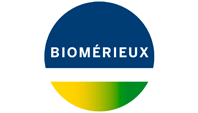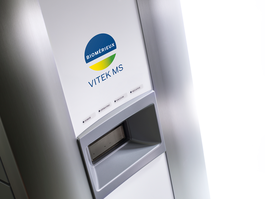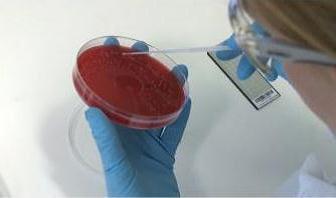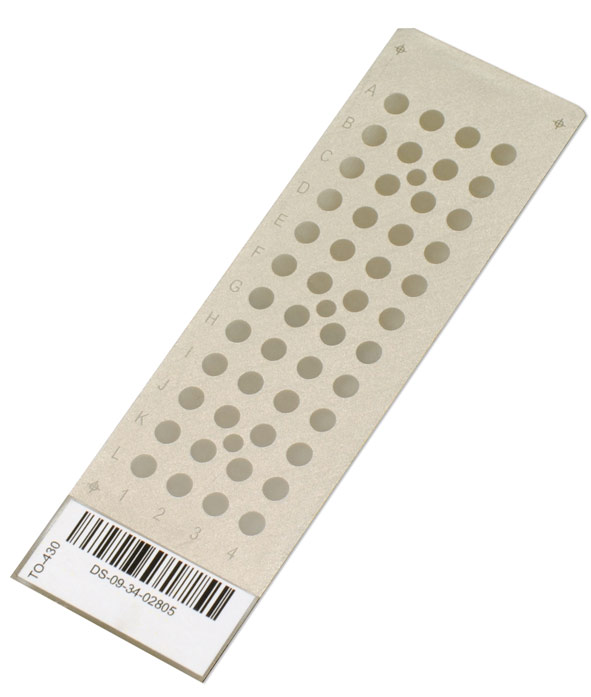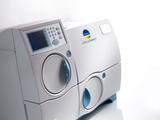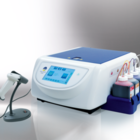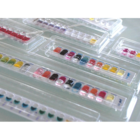VITEK® MS
MALDI TOF Microbial identification system
További tájékoztatást szeretne?
With the VITEK® MS IND system, discover the latest technology for microbial identification and get reliable results within minutes.
Extremely fast identification with efficient workflow
Revolutionizing microbial identification with incredibly short time-to-result, the VITEK® MS system is extremely easy to use, requires minimal reagents while optimizing workflow.
Get results in minutes !
1 – Pick colony

2 – Direct deposit on the slide

3 – Add ready-to-use CCHA Matrix (Formic Acid – Yeast)

4 – Load into VITEK MS
VITEK MS target slides have unique barcode, so high traceability is ensured for each sample
VITEK® MS database: the pillars for high performance
The system database contains a large number of specific microorganisms, increasing identification accuracy.
- Species represented by population: specific species’ characteristics can be revealed
- Average of 18 isolates per species from different fields (clinical, food and pharma) and geographical origins (Asia, America, Europe)
- Average of 40 spectra per species: several culture media and instruments
Benefits of the VITEK® MS identification system
State-of-the-art system, VITEK® MS is the future of microbial identification:
- Extremely short time-to-result: a few minutes for a reliable result
- High throughput: capability to identify up to 192 isolates per run
- Less hands-on time: simpler workflow
- Easy-to-use: no gram staining and microscopic observation is required
- Fast and flexible method: multiple users can prepare samples simultaneously to save time
- High performing identification: no need to outsource routine identifications to costly laboratories
- Informative and easy-to-read results
- Traceability: slides are barcoded and software is easy-to-use
Find out more on the VITEK® MS IND range in our e-catalogue
Mass spectrometry for microbial identification: the MALDI-TOF technology
The VITEK® MS system relies on mass spectrometry, an analytical technique which determines the elemental composition of a sample. It is the latest technology for microbial identification.
MALDI-TOF: Matrix Assisted Laser Desorption Ionization – Time of Flight analyzer
To perform identification, the sample to be analyzed is mixed with another compound : the matrix. When the mixture is applied to a metal plate and irradiated with a laser, the matrix vaporizes and the sample gains an electrical charge, whose mass-to-charge ratio is measured.
To identify microorganisms, the VITEK® MS:
- Ionizes the sample thanks to matrix and laser reaction
- Uses an electric field to accelerate the ions through the same potential
- Measures the time they take to reach the detector – Time of Flight
- Spectrum is sent and compared to a database
Laser
• 337 nm nitrogen laser, fixed focus
• Maximum pulse rate - 50 Hz (50 laser shots per second)
• Near normal (on-axis) incidence of the laser beam to the sample
• Laser power and laser aim under software control
Analyzer
• Linear flight tube of 1.2 m drift length
• Vacuum maintained by two turbomolecular pumps (nominal 250 l/s) with rotary backing
• Beam blanking to deflect unwanted high intensity signals e.g. matrix ions
Dimensions
• Size (w h d) - 0.7 m x 1.92 m x 0.85m, minimum distance to wall at back is 100 mm
• Weight - 330 kg excluding data system
Installation Requirements
• Electrical
- 200 VAC, 50/60 Hz, 1000 VA single phase OR
- 230 VAC, 50/60 Hz, 1000 VA single phase
• A ‘clean’, stable and continuous mains supply is required for reliable operation
• Temperature - ambient 18° to 26° C
• Relative humidity - less than 70% non-condensing
• Vibration free, firm, level floor, at least 330 kg supported at four points
Mass range
• 1 to 500 kDa
VITEK® MS PLUS
The VITEK® MS PLUS option enables you to :
- Build your very own customized database
- Use this database for your research work
